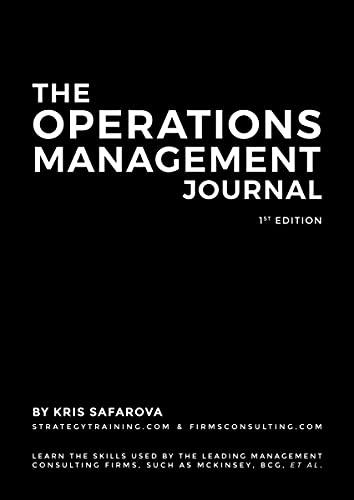Question
Just remove P L A G I A R I S M and re write it paraphrase 2. Discuss the 'Neo-Modernist' paradigm. Explain the fundamentals
Just remove P L A G I A R I S M and re write it paraphrase
2. Discuss the 'Neo-Modernist' paradigm. Explain the fundamentals of this paradigm, and how it relates to organisational theory. In your response to the question, you should discuss the two key traditions within neo-modernism, namely, the 'Human Relations Movement', and 'Industrial Democracy'.
Introduction
Neo-modernism is a word that has been applied to a philosophical viewpoint based on modernism but addressing postmodernism's critique of modernism. It is currently associated with the works of Heller, Victor Grauer, and Carlos Escud, and it is firmly rooted in Habermas' criticisms of postmodern philosophy, namely that universalism and critical thinking are the two essential elements of human rights, and that human rights result in the superiority of some cultures over others. In other words, equality and relativism are "mutually incompatible."
Soon after the modern movement, reactions based on Friedrich Nietzsche and Sron Kierkegaard's philosophies arose. Existentialism was the label given to the reaction, which was defined by the phrase "existence precedes essence." Existentialism was followed by postmodernism, which adopted Nietzsche's critique of modernism's central trait, the will to truth. Existentialist and postmodern beliefs that the essence of an existent is generated in the observer's bias are explicitly refuted by neo-modernists, who claim that truth still exists in a universal form. Neo-modernists oppose postmodern hermeneutics' dismissal of the concept of authorial purpose.
Neo-modernism has been defined in law as an approach that offers indigenous peoples economic rights without limiting them to their traditional economic activity. The relevance of the human side of organizations is recognized by Neo-modernism. People and their needs are prioritized, and an interest in organizational culture, leadership, and management emerges as a result of the awareness that people's values and beliefs shape and are shaped by their experiences in the workplace. (John McAuley, Diberley, and Johnson. 2007)
Historical Background
It arose in the early 1900s in response to a worry that modernism failed to comprehend and consider the human concerns. Human work for reasons other than monetary gain. Personal happiness membership and belonging to a group are among their other incentives. It was recognized that in order for organization to be effective they must be able to account for the various motives that their members may possess. At start there were cottage industries which started closing and at the same point revelation come up and industries were being setup on the land of local people and people got unemployed because they were unskilled for this reason Almost 20000 workers went to strike major chaos started to settle this researcher went for hypothesis theory to know exactly what workers want and the theory was implemented the outcome was totally different this is because the theory has been done on physical factors but the outcome shows it also requires social factors.
HRM
The practice of recruiting, deploying, hiring and managing an organization's employees is known as human resource management. ( Wesley Chai). HRM is employee management with a focus on the employees as business assets. Employees are sometimes referred to as human capital in this sense. Employees, like other corporate assets, should be used efficiently to reduce risk and maximize return on investment. HRM methods are used to manage people in the workplace in order to achieve the organization's objective and maintain its culture. HR managers can help recruit new professionals with the abilities needed to advances the company's goals as well as assist with the training and development of present employees to accomplish objective, if done correctly. Through HRM, hawthorne studies came into place
Hawthorne Research
The Hawthorne research paved the way for the behavioral management paradigm. These were a series of research investigations done with personnel at the Western Electric Company's Hawthorne plant. Psychosocial elements were found to be more motivating than economic or financial incentives in the Hawthorne tests. (Elton Mayo. 1933)
Industrial democracy
Industrial democracy refers to management in industrial units that is led by the people. All those involved in the industrial unit are included in this group. Industrial democracy denotes a balance between the dominant industrial hierarchy's rights and the rights of workers with a broad social goal. The advantages of industrial democracy are that employees would fully cooperate in the implementation of choices sense they are involved in the decision-making process which will make employees get them rights of taking part in the decision. More over employees who have a feeling of belonging can help to sustain industrial harmony.
Conclusion
In general, the behavioral perspective is far more concerned with employee well-being and advocates management practices that view employees as motivated workers who want to work and create high-quality work. As a result, this idea promotes a management style that is less concerned with micromanagement and more concerned with creating relationships with people in order to assist them in achieving their professional goals and working as effectively and efficiently as possible. Neo modernism overall promotes organizational culture.
Step by Step Solution
There are 3 Steps involved in it
Step: 1

Get Instant Access to Expert-Tailored Solutions
See step-by-step solutions with expert insights and AI powered tools for academic success
Step: 2

Step: 3

Ace Your Homework with AI
Get the answers you need in no time with our AI-driven, step-by-step assistance
Get Started


